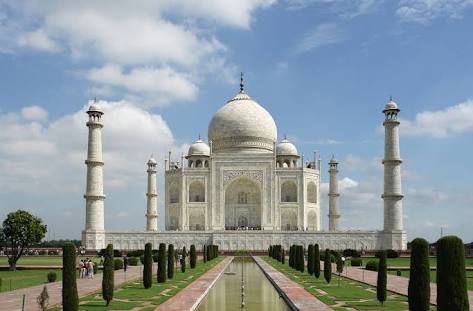Declare Taj Mahal Precinct As No-Plastic Zone, UP Govt Suggests SC

New Delhi: The Uttar Pradesh Government has urged the Supreme Court to declare the entire precinct of Taj Mahal a no-plastic zone and prohibit use of bottled water there.
The other suggestions in its first draft report of a vision document on protection and preservation of the 17th-century monument also include,
- All polluting and sick industries should be removed from the area and focus should be on having a comprehensive traffic management system in which pedestrian movement should be encouraged.
- Following assessment at Taj Trapezium Zone (TTZ) level, Agra level and Taj Mahal precinct, a slew of measures suggested to restore the glory of the iconic monument.
- TTZ is an area spread over 10,400 sq km spread in the districts of Agra, Firozabad, Mathura, Hathras and Etah in Uttar Pradesh and Bharatpur district of Rajasthan.
- A balanced approach towards environment and development should be adopted at Taj Mahal precinct level and the comprehensive traffic management plan should encourage the visitors to travel on foot or use eco-friendly modes of transport.
- Road widening on the heritage precincts to accommodate the increasing traffic need to be prohibited.
- Battery operated eco-friendly modes of transport along tourist routes were required to be introduced with designated stops for ‘hop-on-hop-off’.
- Visual clutter, including electric cables and hoardings, should be minimised to enhance the overall experience of visitors and Agra city should be made pedestrian-friendly with adequate infrastructure at the place.
- In a view to reduce pollution in the area, afforestation should be promoted in TTZ region by increasing the green areas and polluting and private vehicles should be restricted in the region.
- Traffic management system for Agra city should enable transition towards e-mobility and green fuels and electric vehicles or vehicles running on cleaner hydrogen fuel should be used.
- For the safety of the tourists, all transport system developments should be with an objective of improving accessibility, road safety and air quality.
- No construction should be proposed on the flood plains and Yamuna river banks. These should only have natural plantations.
- The rains in Taj precinct should be covered and a green buffer designed, but any further development on reserved forest area and its extension should not be allowed.
- ‘Closure of polluting industries in the region and promotion with incentives in alternative industries as per availability of raw materials’ and ‘removal of sick industries and allocating lands to more economical non-polluting white and green category of industries’ there.
- There was a need for shifting focus from tourism to developing other sectors to bring livelihood opportunities for the locals and a robust community participation must be conducted to create any development guidelines or proposal for residential areas in the precinct.
The vision document was submitted after the apex court on July 11 had lashed out at Uttar Pradesh government for its apathy towards the historic monument, considered one of the seven wonders of the world and a major tourist draw.

Comments are closed.